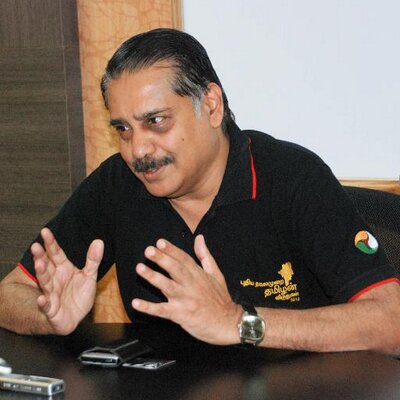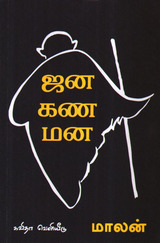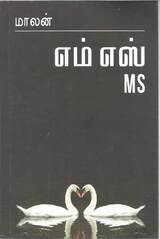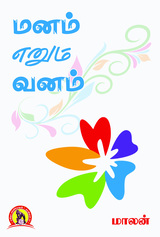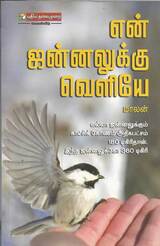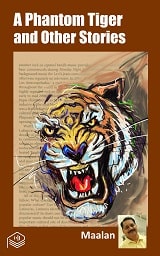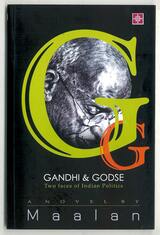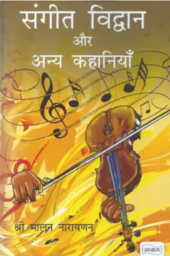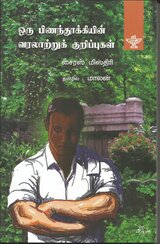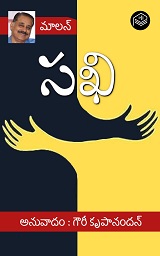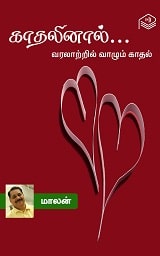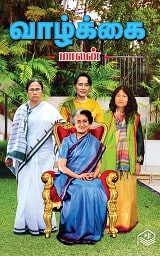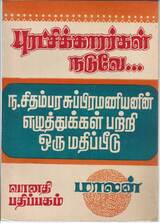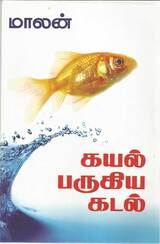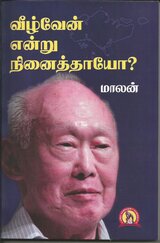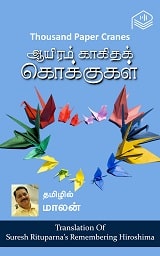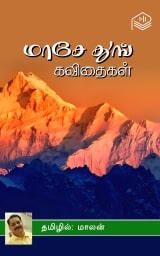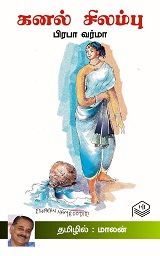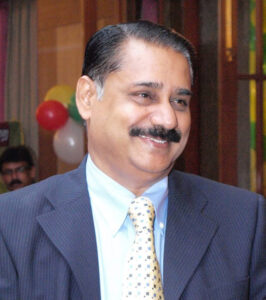as expressed in their works on social progression in the post-independent Singapore
Pride of any literature rests on being alive to social realities. Over a Tamil writing in Singapore is buzzing with the portrayal of social actualities. With Singapore becoming a country and was in making of a modern nation in mid-sixties, Singapore literati became sensitive to new realities
This study presents the voices of Singapore Tamil writers, as expressed in their works, on the social transformation of Singapore witnessed over half a century, since it became a Republic in 1965
Considering the enormity of the subject, I have restricted my study to the fiction and poetry (which form a big chunk of Singapore Tamil literature) written /published between 1965 and 2015. Though numerous writers have written adequately on various subjects, illustrations in this paper are from the works of writers who have won coveted literary awards either in Singapore or abroad
Transformation
Singapore became Republic at an unexpected moment of history, like a ‘bolt from blue’ [1] on August 9, 1965. Shocked, but undeterred, the founding fathers of modern Singapore, saw an opportunity in the crisis, an opportunity to build their dream nation state, a multi-racial, multi- lingual, multi-religious, tolerant society. But the challenges ahead were not merely cultural. There were pressing ‘bread and butter’ issues — stabilising economy with no natural resources except a deep seaport and no hinterland, sustaining development, creating jobs, building new habitats, ensuring education for all, and defending the new found sovereignty from colonialism and communism demanding priority.
The determined work of the founding fathers, brought in many changes in the lives of many Singaporeans and Singaporean Tamils are no exception. “Three major initiatives that transformed the lives of Tamils lives,” according to Dr.A.Veeramani, are “housing, education, and the rapid pace of economic growth” [2] I would list the following are some of the major milestones of transformation:
- Becoming the Independent Republic
- Kampongs to HDB
- National Service
- Education Policy
- Status of Women
- Economic Prosperity
- Economic Slowdown
- SARS
When the new Singapore Republic was born, there was no fanfare, fireworks, frolic or feasts. It was a moment of anguish and uncertainty. Like all others Tamil community too was stunned and panicked [3]. Tamil newspapers seemed to have believed that the separation from the federation was a miscommunication between brothers and would be resolved in course of time. They were hoping against the hope that Singapore would rejoin Malaysia. [4]
But reality dawned on them soon. After a brief silence, poets filled the air with their poems in praise of Singapore and its leadership. K.Perumal, a pioneer featured in the gallery of Singapore Literary Pioneers at the National Library, came out with a poetry collection, ‘Singapore Padalkal’ (Hymns on Singapore) [5] This collection, with 133 songs, is entirely on Singapore as a nation. Mr.V.T.Arasu, in his preface to the book, hails the work: “Out and out all the songs are on Singapore Yet the poet has not drowned the songs on the description of the landscape and in exaggeration. On the contrary, he points out the basic values of Singapore” [6]
Paranan, a SEA Write awardee (1986) has devoted 19 poems (out of 100) in his collection Thoni (Boat) to sing in praise of the Republic. [7]
Nudged by media National day came in handy for poets as an occasion to display their pride and patriotism On the 10th anniversary of Singapore becoming a Republic, Na.Palanivelu, recipient of Cultural Medallion (1986) eulogised in his poem ‘duty’:
Ten years of independent rule
Has made us undeniably world renowned
Small pearl like clusters of islands fronting it
Our Singapore emerges like a diamond radiating in all directions
Telling for the splendour and affluence of the land
Let us put our earnest resolve to prosper further
This is our duty [8]
Naa.Aandeappan [9] and Pichinikkadu Elango [10] used diamond as a metaphor in their poems
Over the period of time, these poetic outflows turned to be a ritualistic exercise rather than exuberant expressions as it became a routine.
Kampongs to HDB
Post republic, when Singapore underwent rapid urbanisation, many kampongs, maybe a few hundred, transformed into high rise apartments, thanks to Housing Development Board (HDB) HDB is undoubtedly a masterstroke in making Singapore into a modern metropolis. In less than a decade, in 9 years to be precise, 1.5 lakh people were relocated. [11]
This one step has changed dramatically the lifestyle of many Singaporeans of the earlier generation. Moving from rickety wooden houses with attap roofs and without electricity to concrete blocks with tiled floors is not just a migration but a journey: A journey from primordial past to promising future; a journey from aggravation to advantage; a move from misery to modernity.
However for many HDB residents relocation caused distress. Some were afraid of lifts and constantly climbed stairs. All residents had to adjust overnight to new neighbours of different races. Those accustomed to living close to the ground with livestock and poultry found relocation to HDB challenging.
Mayandiambalam Balakrishnan, more popularly known by his pen name, Singai. Ma. Elangkannan, first Tamil writer to receive the South East Asian Writers Award in 1982, portrays a poignant picture of parting cattle raised at a Kampong home in his novel Ninaivukalin Kolangal (“designs of memories”):
“Those standing in the truck pulled the cow by the rope in its nose. Refusing to walk in the cow pulled them back. A person standing behind the cow twisted its tail to nudge it forward. The cow, still resisting, plodded into the truck. It shivered in fear and shat. Thrusting its neck forward, it cried, helplessly “..Moo!” Tears appeared in the eyes of Maragatham, who was watching its plight. It appeared to her as if the cow is crying Amma (mother) towards her. She turned aside. And there stood the cow with black spotted skin. It has become barren now. Her husband, Murugaiya, used to say more often, “We became better off with her. Let us not sell it. Let she die here” Her husband’s word passed through her mind. Tears rolled down her cheeks. Unable to bear the sight she rushed in.” [12]
It is not just the cattle they missed when they moved to high-rise flats, but their kinship with their neighbours in the kampongs Unlike Elangkannan, Kanagalatha, who writes under the pseudo name Latha, is a writer of another generation and was not a witness to the transformation of the 70s. Yet she presents the anguish of the loss of comradeship in the relocation through one of her characters in a short fiction, Veedu (“home”) “We were moving with each other like sisters, but the relocation threw us apart to different directions. Having accustomed to a living close to the ground and next to trees, I found high rise living challenging. It was living as if confined to four walls and was suffocating. I couldn’t sleep and it took a long time for me to adjust to the new surroundings” [13]
But these agonies, on the other side of the coin, had its own ecstasies. Elangkannan didn’t fail to depict the excitement on arriving at the new flat
Many of our Tamil poets were excited about these skyscrapers. For poets, the romantic façade of the high-rise apartments had eclipsed the pangs of relocation. N.Palanivelu, recipient of Cultural Medallion, in his poems claims the miseries have vanished like a dream [14]. K.T.M. Iqbal, an eminent poet and recipient of SEA Write Award and the Medallion, is fascinated with the cloud-kissing-skyscrapers[15]. Paranan, another veteran, goes further up and awestruck with the tall residential flats that block the sun! [24]
However dramatic the romantic side is, the bottom line of the high-rise living was the budgetary pressures it excreted on the purse. In a radio drama series, Aduku Veetu Annasami,(Annasami and his apartment) that was on the broadcast for 52 weeks, Pudumaithasan (P.Krishnan) another awardee of Cultural Medallion, brings out the pinch on the valet.[17]
Accounts of kampong life transcend beyond the triumphs and travails of modernisation as they bring to us the human side of urbanisation. After all, that is what literature strives for centuries. Today kampong life has no relevance than being a reminder of the past when life was simpler rather than easier.
National Service:
When Singapore became independent it had an army that was grossly understrength and with vintage weapons. Dr.Goh Keng Swee, Minister for interior and defence, realised with Singapore’s population at less than two million it would have been impossible to form and maintain a large army like those of Singapore’s neighbours[18]. He proposed a citizens’ army and thus born the National Service in July 1967.
Irama. Kannapiran, a SEA Write Award winner (1990) brings out the facets effectively in his story Tanah Merah Diary [19]
Education Policies:
- Bilingualism
British under their colonial rule had allowed Singapore’s different ethnic communities, to educate their own children in their own mother tongue. Economic necessities of newborn Singapore demanded an approach that is far different from the British approach. A Singaporean bilingualism model was created with a dominant place for English, as the medium of instruction at all levels and the mother tongue as the second language.
When the new bilingual policy came into force they vanished one by one, as sensing the better career opportunities with English medium education, many parents in Tamil community, shifted their children to English schools. This resulted in folding up of Tamil schools rapidly.
But paradoxically, for the Indian community of Tamil ethnicity, Tamil is not just their mother tongue, but a matter of identity to which they are emotionally twined. This milieu, triggered debates among the Tamil community on the benefits and losses arising out of the new education policy.
Eminent poet Paranan strongly advocated the bilingualism and pleaded with parents to opt for English education in his poem Iru Vizhigal (“Two eyes”) [20]
Interestingly, Irama.Kannabiran, an English teacher by training, speaks out his apprehension on the future of Tamil as a language spoken at home. [21]
Today, “Concurrent with the rise in the level of English literacy, the usage of English at home became more prevalent.Correspondingly, the use of Malay and Tamil as home language was less prevalent among the Malays and Indians respectively in 2010 compared to 2000” observes Census report 2010 [22]
b)Primary School Leaving Examination (PSLE)
Though PSLE was launched long before independence (The first PSLE was held from 2 to 4 November 1960) [38] it acquired new dimensions since 1992. Under a new system, opportunities for students to get into ‘good’ secondary schools were determined on the basis of their Aggregate T-Scores. [23]
In the competitive environment of Singapore, where the dictum of meritocracy prevails, this has caused a state of anxiety more among the parents than students.They pressure children, at least a year ahead, to devote more attention to studies. Children are barred from playing games and from indulging in all other past times. Their TV time is robbed by tuition classes and weekly holidays are filled with enrichment programs.
Portraying the stress of children through their own words, in her short story six five, Azhagunila, captures the anxiety of the parents as well [24]
Mom has banned me from computer games, cartoons, PSP and soccer – all
with the same excuse of Primary Five! Primary Six! On days without school,
dad used to go out with me and Rahul. Now he doesn’t bring me anywhere.
The numbers five and six make me feel sick. I’d love it if someone could tell
me the secret to join secondary school without having to sit for the PSLE.
Status of women
Another area where the transformation in the last fifty years since independence which is distinct is the status of Singapore women. In the United Nation’s Human Development Index for 2014 (released in 2015) Singapore is ranked 13 (out of 155 countries) making it the top Asian country for gender equality. [25] Modern Singapore women, unlike the most mothers of 1960s who stayed at home, have access to education and employment at par with men. The employment rate for women is at one of its highest levels in the world – 76 percent for the prime working ages of 25 to 54.
Education brings awareness and becoming aware is the beginning of change. With the level of education rising up and the presence in the workforce becoming bigger, women assert themselves in their new roles as career women. They shun the traditional role of homemaker. This seems to have caused some strains in the man-woman relationship, as could be seen from the following facts:
- Marriages are deferred
- Increased persons preferring singlehood
- Increase in divorces
Writers, as conscious keepers for the community, are of opinion that the institution of marriage denies the self-esteem, identity and freedom for women Eminent writers Elangovan[26] Na.Govindasamy,[27] both of them are SEA Write Award winners and Se.Ve.Shanmugam [28]have voiced with concern the status of women in the changing society. Suriya Rethnna, a recipient of Young Writers’ Fellowship by Mont Blanc, and Karikalan award of Tamil University, (Thanjavur, India) describes in a moving story, Iraivanin Kuzhanthai (God’s own child) the pride and plight experienced by a single mother [29]
In an award-winning story, Kolangal (“designs”) Seethalakshmi, brings out the flip side of divorce, the loneliness of a man [30]. Shaanavas, whose short story collection, Moontravathu kai (“Third arm”) won Singapore Literary Prize in 2014, believes, lack of understanding, more than lack of love, is the cause for failure of marriages, in his story Pesa Mozhi (“unspoken language”)[31]
Singapore writers, whether they belong to Gen-X or Gen –Y, male or female, have voiced unequivocally their opinions that are liberal in nature, on marriage, singlehood and man-woman relationship.
Economic Prosperity and Slow down
Singapore’s economic growth over the last fifty years from a nominal GDP per capita of US$ 500 to US$ 56,000 is, unmatched and astounding.
This journey of $500 to $ 56000 has brought in prosperity in every Singaporean life, and Tamil community is no exception. Children of workers once engaged in menial jobs like coolies at the dock, scavengers, peons have now socially progressed as doctors, lawyers, teachers and successful entrepreneurs Many have written stories hinting this social change. Pon.Sundarasau’s story “Ippadiyum oru Pizhaippu” (” a livelihood of a kind”) in his short story collection Ennathan Seyvathu (what to do?) is a story of this kind [32]
But the Singapore story is not without twists and turns. Between 1974 and 2008 Singapore economy was buffeted by one crisis after another. Among this 1985 recession seems irrational because Singapore’s domestic economy contracted while the global economy was still growing.
Despite the reasons and justifications, this recession pinched the common man, and for some, it was a deadly blow. P.Krishnan, a SEA Write Award winner depicts the plight of a middle-class worker who opts to invest his CPF savings in share market. All of a sudden the stock market crashes and the worker loses not just his money but also his life.[33]
SARS
The outbreak of Severe Acute Respiratory Syndrome (SARS) in February 2003, besides impacting the economy, unleashed a sense of fear among the residents of Singapore. Ironically, hospital staff, who were saving those infected from death, risking their own life, bore the brunt. They were shunned in public places, fearing they may be the carrier of the virus. Cabbies refused to give them a ride, neighbours suddenly turned indifferent and unfriendly, and in some extreme cases, the tenants were asked to vacate, against law.
Jayanthi Sankar captured almost every one of these incidents in a story Mukhangal (“faces”) The story stands as a testimony to the human behaviour in the event of a life-threatening epidemic [34]
Conclusion:
I find Singapore Tamil writers have been responding to the various changes that had taken place in the last half-a- century, at their best, though not with great articulation. They have voiced their concerns, anxiety and happiness that were brought into their lives by the social and economic transformations within a narrow framework of their home or neighbourhood. Political discourses are rare. Hardly have they initiated any literary movements through their works.
Without any reluctance I would say, Singapore Tamil writing has been echoing the voices of the community that are sometimes poignant, sometimes bemused, and most of the time moderated.
References :
- National Library Board and National Archives of Singapore. (2007).Singapore The First Ten Years of Independence 1965 to 1975,( p.6) Singapore. Call no. English 959.5705 SIN -[HIS]
- Veeramani.A ( 2004) in Chitra Saṅkaran̲ ; Sp. Thiṇṇappan̲.(Ed) முதல் படி அனைத்துலக அரங்கில் தமிழ், (Tamil in an international arena, first step) /. Singapore : UniPress,
- Tamil Murasu 10 August 1965 Microfilm NL4379
- பிரிந்தாலும் சகோதரர்களே (“Brothers even if we part”) Tamil Malar 11August 1965 Microfilm NL4363
- Perumal.K (1979) சிங்கப்பூர் பாடல்கள் (“Hymns on Singapore”) Singapore: Maraimalai Publications. Retrieved from Book SG: http://eresources.nlb.gov.sg/printheritage/detail/81bb08d4-4a17-4a4c-a657-4a0abc3c54aa.aspx
- Ibid
- Paranan (1985) தோணி (“Boat”) Singapore : Tamil̲vaḷarccip Paṇṇai, Retrieved from Book SG. http://eresources.nlb.gov.sg/printheritage/detail/5f7b57b5-5896-4622-af3c-b2ca5518788b.aspx
- Palanivelu.Na.(2013) கடமை (“Duty”) in Sundari Balasubramaniam (ed) A Selection of Na.Palanivelu’s Poems.(p.33) Singapore: National Library Board
- Aandeappan.Naa. (2014) உயர்தர வைரம் (“Classy Diamond”) in மீசை முளைக்காத காதல் (“adolescent love”)(p.43) Singapore: Baraniya Pathipagam Retrieved from Book SG. http://eresources.nlb.gov.sg/printheritage/detail/24e3623b-9545-4f08-847c-a7576169cd3c.aspx
- Elango Pichinikkadu (2017) ஆகஸ்டு ஒன்பது (August 9) in அங்குசம் காணா யானை (“elephant without elephant goad’) (p.29) Singapore: Author
- ஒன்பதாண்டுகளில் ஒன்றரை லட்சம் பேர் மறுகுடியமைப்புச் செய்யப்பட்டனர் [“Under Singapore’s Urban Renewal Programme some 150,000 people have been resettled over the last 9 years”] (1969 January 25) Tamil Malar,(p.9) Microfilm NL 5835
- Elangkannan.Ma, (2006) நினைவுகளின் கோலங்கள் (designs of memories) p.140 Chennai, Chuvadi. Retrieved from Book SG. http://eresources.nlb.gov.sg/printheritage/detail/0ae587fe-2ae1-4f57-b183-edaccce88935.aspx
- Kanagalatha (2007) வீடு (“Home”) In நான் கொலை செய்யும் பெண்கள் ( “The women I kill”) (p.93) Singapore . Retrieved from Book SG, http://eresources.nlb.gov.sg/printheritage/detail/bc631436-b581-4db6-862a-8b1fbafd33d5.aspx
- Palanivelu.Na.(1997) சிங்கையின் பொருள் வளம் (“Prosperity of Singapore”) in கவிஞர் ந. பழநிவேலுவின் படைப்புக் களஞ்சியம். Vol. II (“Collected works of Na.Palinivelu Vol.II”) (p.219) retrieved from Books SG http://eservice.nlb.gov.sg/data2/BookSG/publish/c/c731e365-2b8a-42d3-a306-aad1ee9a4097/web/html5/index.html?opf=tablet/BOOKSG.xml&launchlogo=tablet/BOOKSG_BrandingLogo_.png&pn=231
- Iqbal. K.T. M (1975) எங்கள் நாடு (Our Country) in இதய மலர்கள் (“flowers from heart”) (p.36) Kadayanallur, India:Panimalar Publications Retrieved from Book SG. http://eservice.nlb.gov.sg/data2/BookSG/publish/4/411236d6-bd71-408f-94eb-57970d288529/web/html5/index.html?opf=tablet/BOOKSG.xml&launchlogo=tablet/BOOKSG_BrandingLogo_.png&pn=1
- Paranan (1985) இசை நட்டு வாழ்க (“Long live with glory”) in தோணி (“Boat”) (p.69) ”) Singapore : Tamil̲vaḷarccip Paṇṇai, Retrieved from Book SG. http://eresources.nlb.gov.sg/printheritage/detail/5f7b57b5-5896-4622-af3c-b2ca5518788b.aspx
- Puthumaithasan (2000) அடுக்கு வீட்டு அண்ணாசாமி (“Annasami and his apartment”) ( p.7) Retrieved from Book SG http://eresources.nlb.gov.sg/printheritage/detail/89a1ae62-55e5-4ccb-ab6c-91d8ad68b1f6.aspx
- National Library Board and National Archives of Singapore. (2007).Singapore The First Ten Years of Independence 1965 to 1975,( p.84) Singapore. Call no. English 959.5705 SIN -[HIS]
- Kannapiran,Irama. (2015) தானா மேரா டைரி (“Tanah Merah Diary”) in Ira.Durai Manikam, Irama. Vairavan et.al (ed) சிங்கப்பூர் பொன்விழாச் சிறுகதைகள் (Golden Jubilee short-stories) (p.80) Singapore : Association of Singapore Tamil writers
- Paranan (1982) இரு விழிகள் (“Two eyes”) in எதிரொலி (“Echo”) (P.43-44) Singapore: Tamil Valarchi Pannai Retrieved from Book SG : http://eservice.nlb.gov.sg/data2/BookSG/publish/0/0c5ca4b1-5a0d-4082-870e-526c0c1120df/web/html5/index.html?opf=tablet/BOOKSG.xml&launchlogo=tablet/BOOKSG_BrandingLogo_.png&pn=1
- Kannabiran (2015) வாழ்வு (“Life”) (p.31) Singapore: Crimson Earth
- Singapore Department of Statistics (2010) Census of Population 2010 Statistical Release 1 Demographic Characteristics, Education, Language and Religion (p.27)
- Singapore Examinations and Assessment Board, retrieved from its website http://www.ifaq.gov.sg/SEAB/apps/fcd_faqmain.aspx?qst=hRhkP9BzcBImsx2TBbssMsxu7lqt6UJK70a1wAEVmyfdSZlp3kC3qEU1uwdD2zxBC8h26bwjs%2FIwvamUXpJQllIbGr3zfx%2Fg6R5G3kQwdaBqrmc6VVtGVreSd34s3fzQd2XjpEaXHjFH9k4Aky4ad22Tv9ZVP3e82AhV2YIeMwaGIBKFIrvh5zfUcyEdjkBGvw8b%2Bh1woqMmu1%2FCwl6UK4xSGccfs%2FuC2rGMLPsW7lE%3D#FAQ_93280
- 24. Azhagunila, (2015) ஆறஞ்சு (“Six five”) (p 40-41) Singapore: Author
25. Singapore is top Asian nation for gender equality: UN report (December 29, 2015) The Straits Times. Retrieved from SPH website : http://www.straitstimes.com/singapore/singapore-is-top-asian-nation-for-gender-equality-un-report
- Elangovan (1999) Talaq (Divorce) (p.15-16) Singapore: Author Call no: English S894.8112 ELA
- Govindasamy, Naa.(1991) அமைப்பு (“system”) in தேடி (“in search” ) (p.76-77) Singapore : Orchid Publishing House, 1991. Call no: Tamil S894.811371 GOV
- Shanmugam, Se.Ve. (1989) மற்றொன்று (“another one”) (p.214-225) in Singapore Tamil Sirukathaikal. Chennai India, Tamil Puthakalayam Call no. Tamil 894.811371 SIN
- Suriya Rethnna (2013) இறைவனின் குழந்தை (“God’s own child”) in ஒரே வானம் (under one sky) Singapore : National Library Board Call no. Tamil 808.831 MAL
- SeethaLakshmi (2001) கோலங்கள் (“designs”) in கண்ணாடி நினைவுகள் (“memories of reading glass) (P 113-122) Singapore: Author retrieved from Book SG http://eservice.nlb.gov.sg/data2/BookSG/publish/5/5c6eaee6-1e49-44af-a3bf-cba090284419/web/html5/index.html?opf=tablet/BOOKSG.xml&launchlogo=tablet/BOOKSG_BrandingLogo_.png&pn=3
- Shaanavas (2013) பேசாமொழி in மூன்றாவது கை (“Third arm”) (p 78-84) Chennai, India: Thamizhvanam . Retrieved from Book SG: http://eservice.nlb.gov.sg/data2/BookSG/publish/c/c1791a86-87f8-43a3-b27f-99663629f589/web/html5/index.html?opf=tablet/BOOKSG.xml&launchlogo=tablet/BOOKSG_BrandingLogo_.png&pn=1
- Sundararasu,Pon. (1981) இப்படியும் ஒரு பிழைப்பு ((“ a livelihood of a kind”) (p.64-75) in என்னதான் செய்வது? (What to do?)Chennai, India: Tamil Puthakalayam. Retrieved from Book SG: http://eservice.nlb.gov.sg/data2/BookSG/publish/3/3219e902-92a5-4eba-aec1-4f5fd612ad42/web/html5/index.html?opf=tablet/BOOKSG.xml&launchlogo=tablet/BOOKSG_BrandingLogo_.png&pn=1
- Krishnan,P.(1993) ஓய்வு (Retirement) in புதுமைதாசன் கதைகள் (“Stories of Pudumaidasan”) Singapore: Okkid Pathipagam Retrieved from Books SG. http://eservice.nlb.gov.sg/data2/BookSG/publish/e/eaefc1ba-16bd-41c2-b8a5-d9609ecb0dce/web/html5/index.html?opf=tablet/BOOKSG.xml&launchlogo=tablet/BOOKSG_BrandingLogo_.png&pn=1
- Sankar, Jayanthi (2013) முகங்கள் (“Faces”) in ஜெயந்தி சங்கர் கதைகள் (Jayanthi Sankar Kathaigal) Chennai India, Kavya

